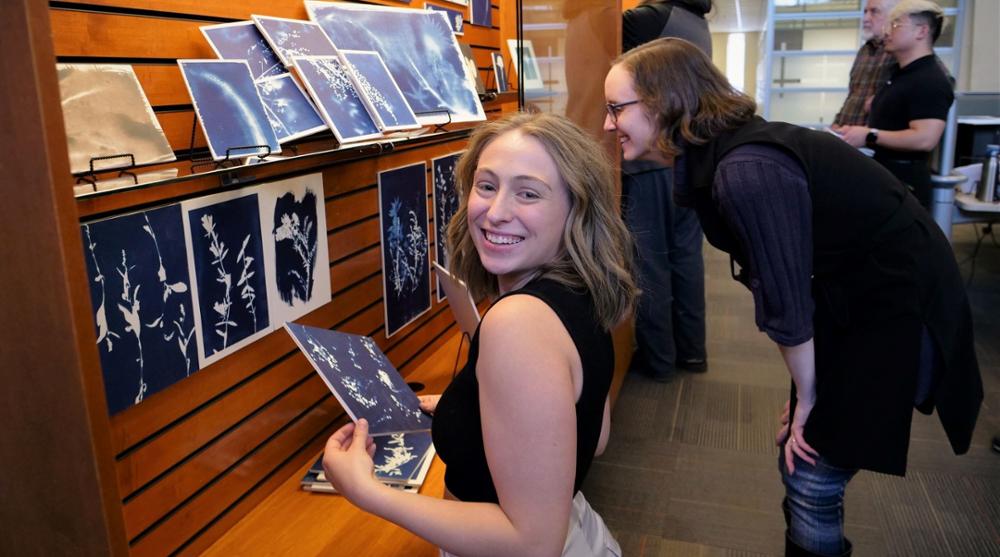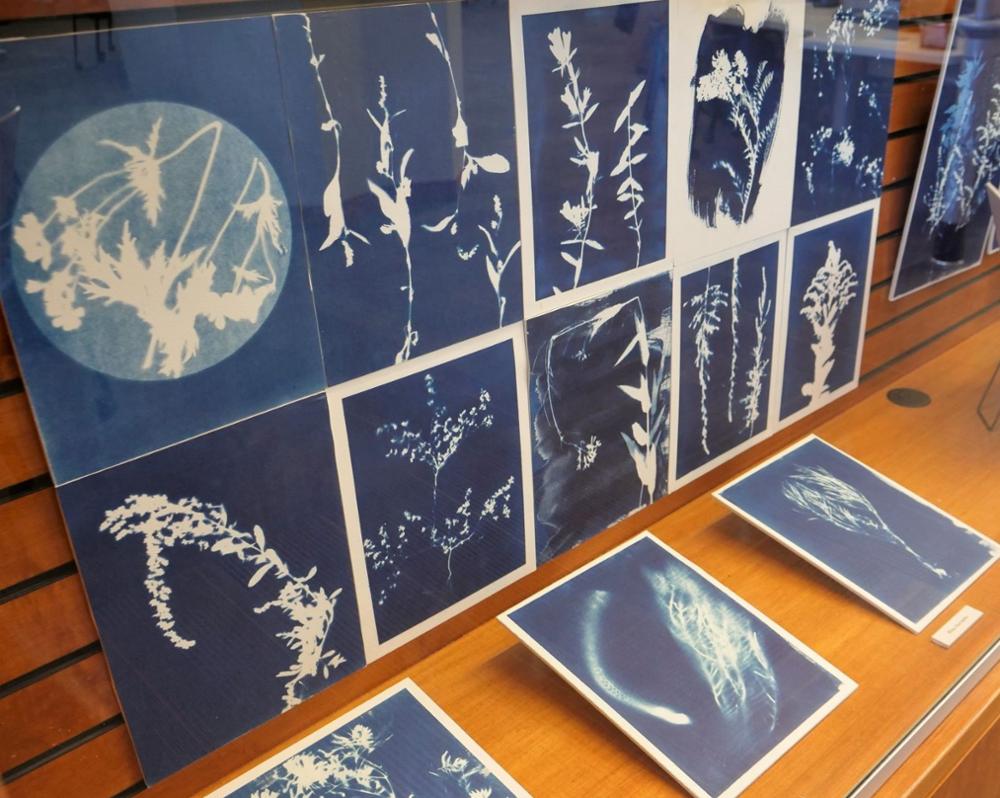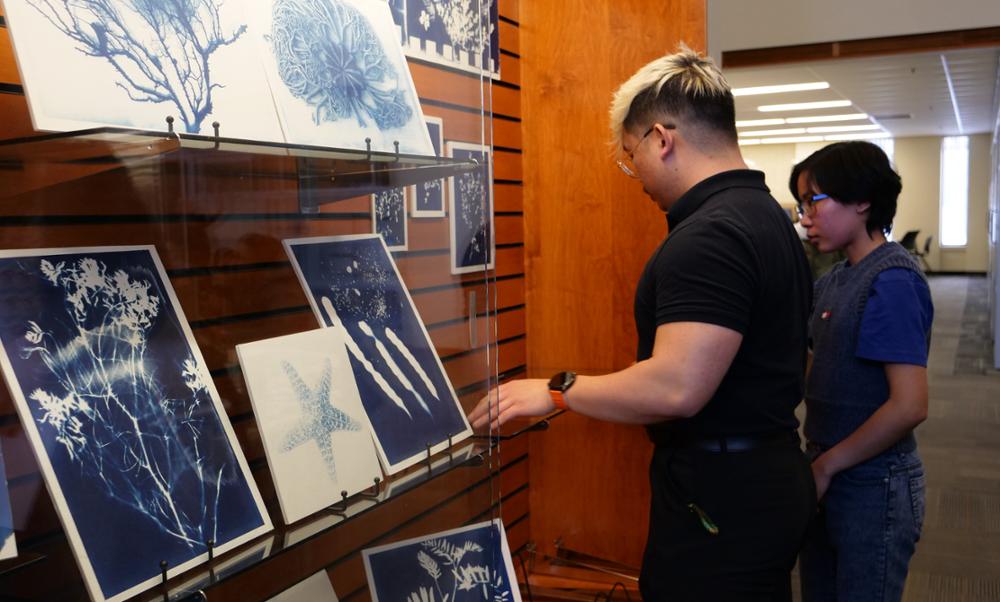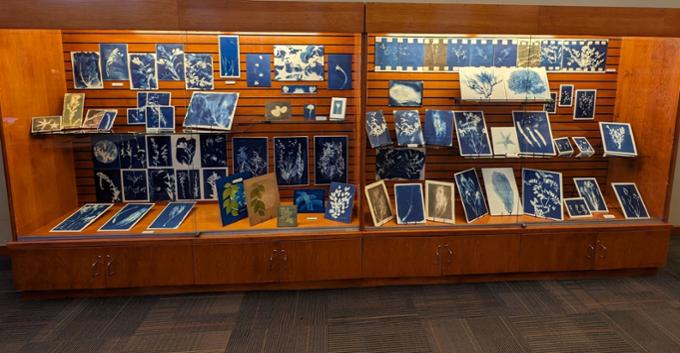Talk about standing on the shoulders of giants!
Anna Atkins (1799-1871) was an English botanist and photographer. She is considered the first person to publish a book illustrated with photographic images and is often credited as being the first woman to create a photograph. To do this, Atkins used a cyanotype technique, a form of camera-less photography using light to create images.
Fast forward, some 90-odd years to George Ledingham, former University of Regina biology professor and head of the biology department. Dr. Ledingham spent a lifetime collecting more than 70,000 plant samples from Saskatchewan and around the globe. Those tens of thousands of samples are housed here, in the on-campus herbarium that now bears his name.
Now in 2024, those Herbarium specimens are getting a new lease on life by students in Dr. Risa Horowitz’s Historical Photographic Processes class. Merging art and science, the students are experimenting with the same cyanotype technique that Atkins used.
I realized the specimens in the Herbarium might offer students some fabulous subject matter for their first class projects.” — Dr. Risa Horowitz, Professor of Visual Arts, U of R.
Dr. Horowitz, Professor of Visual Arts, along with her students are working in partnership with Dr. Mel Hart, Associate Dean of the Faculty of Science, and the Dr. John Archer Library to create a public art exhibition, “Through Blue 2024”. This opportunity means that the students will have their work seen by more than just their classmates and that members of the public, can critique it – a common experience for professional artists, but not students.
“Artists have to show their work publicly and be open to scrutiny, it comes with the job,” says Dr. Horowitz.
The student artists
Sharing your artwork can be an exercise in vulnerability. This is why Rhylynn Wahl, a Computer Science student with a minor in Photography, enjoys taking classes with Dr. Horowitz and appreciates her approach to creativity – taking a step back and allowing the students to be creative without intervening. "She doesn't critique while I'm working and in a creative space. She critiques in class when I'm ready," said Wahl. Dr. Horowitz knows that this allows students to find their voice, explore their ideas, and feel safe knowing the guidance is there when they are ready to receive it.
Another unique strength of this course is the diversity of students enrolled. "It’s great having all these other students at different levels because it gives you ideas," says Florence Duesterbeck a 400-level senior student pursuing a Post-Bachelor Certificate in Visual Arts. Duesterbeck is particularly excited about this public exhibition because she took the course in 2020 but it was cut short due to the pandemic, and now’s her chance to finally display her cyanotype images.

The magic of cyanotype
A camera-less technique to create images sounds like magic when really, it's science!
Dr. Horowitz breaks down the technical process making it easier to understand:
- With a brush, you apply a chemistry solution to the paper and let it dry.
- Then you place the specimens on the paper and expose them to ultraviolet light.
- As a result, you capture the shadow of the specimen.
While some students stuck to more traditional cyanotype techniques, other students were eager to experiment. Mary Rose, a Political Science student with a minor in Photography, toned her images with green tea, which changed the colour of the paper. Whereas Jayden Thompson a Visual Arts student, explored different ways to apply the solution to her work, from dropping the solution on to splattering it. Like Atkins, she even included her own pressed flowers in her photographs.

The Hart of the Herbarium
This exhibition was possible with the support of Dr. Hart, who first toured Dr. Horowitz through the Herbarium. The tour sparked something for Dr. Horowitz, who says, “I realized that the specimens in the Herbarium could provide excellent subject matter for our students' first class projects.” This was the opportunity to connect her teachings to Atkins' work.
Dr. Hart, who is passionate about creating learning opportunities for students, was happy to facilitate the students in selecting and borrowing specimens.
The art installation not only highlights the artistic talents of the U of R’s students, but also serves as a reminder of George F. Ledingham, and the extraordinary specimens within the herbarium.

Visit the installation
Visit the Dr. John Archer Library and Archives to find the living installation displayed at the Archives entrance. Throughout the semester, as the students continue to experiment with the cyanotype process, they will update the installation and rotate the artwork. Check out the current artwork before it's gone!
Find out more about a Visual Arts degree at the U of R.
“Through Blue 2024” features work from student artists, Elizabeth Dow, Florence Duesterbeck, James Hall, Nico Inocalla, Johnathan Jones, Rose Molina, Jayden Thompson, Rhylynn Wahl, as well as, Dr. Mel Hart and Dr. Risa Horowitz.
About the University of Regina
2024 marks our 50th anniversary as an independent University (although our roots as Regina College date back more than a century!). As we celebrate our past, we work towards a future that is as limitless as the prairie horizon. We support the health and well-being of our 16,700 students and provide them with hands-on learning opportunities to develop career-ready graduates. Our research enterprise has grown to include 21 research centres and 12 Canada Research Chairs and brings in more than $51.2 million in funding annually. Our campuses are on Treaties 4 and 6 - the territories of the nêhiyawak, Anihšināpēk, Dakota, Lakota, and Nakoda peoples, and the homeland of the Michif/Métis nation. We seek to grow our relationships with Indigenous communities to build a more inclusive future.
Let’s go far, together.
